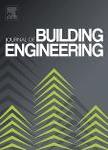版权所有:内蒙古大学图书馆 技术提供:维普资讯• 智图
内蒙古自治区呼和浩特市赛罕区大学西街235号 邮编: 010021

作者机构:Politecn Milan Dept Architecture Built Environm & Construction En Milan Italy Univ Sydney Sch Architecture Design & Planning Sydney Australia
出 版 物:《JOURNAL OF BUILDING ENGINEERING》 (J. Build. Eng.)
年 卷 期:2022年第53卷
核心收录:
基 金:NSGAII Ministry of Economic Affairs, MOEA
主 题:Adaptive building envelope Responsive building fa?ade Multi-objective evolutionary algorithm Evaluation framework Building performance
摘 要:Multi-functional kinetic facades have great potential to adapt to the environment, reduce building energy consumption, regulate shading and natural ventilation, and improve human thermal and visual comfort. However, due to their complex nature, kinetic facades systems are often associated with highly onerous time-consuming design and fabrication processes, which significantly limit their diffusion and market uptake. This research aims to propose an integrated, systematic framework that supports kinetic facades performance design and decision making since projects early design stages. The proposed method makes use of Multi-objective Evolutionary Algorithms (MOEA) which have proven successful in providing optimum solutions for complex problems. The efficacy of the framework is then validated based on a case study analysis to improve daylighting performance in an office building context. The results indicate that the integration of the proposed framework can provide a variety of data to support performance evaluation and to identify the most efficient kinetic facades solutions;moreover, this method provided a variety of optimal solutions using Pareto front and the Ranking Method;each being advantageous in a specific set of criteria as evidenced by improved useful daylight illuminance by up to 30%, daylight autonomy by up to 20% while keeping the under-lit and over-lit values as low as under 10%. Finally, future research can focus on the integration of soft computing methods to create a smart and intelligent performance evaluation framework for kinetic facades.